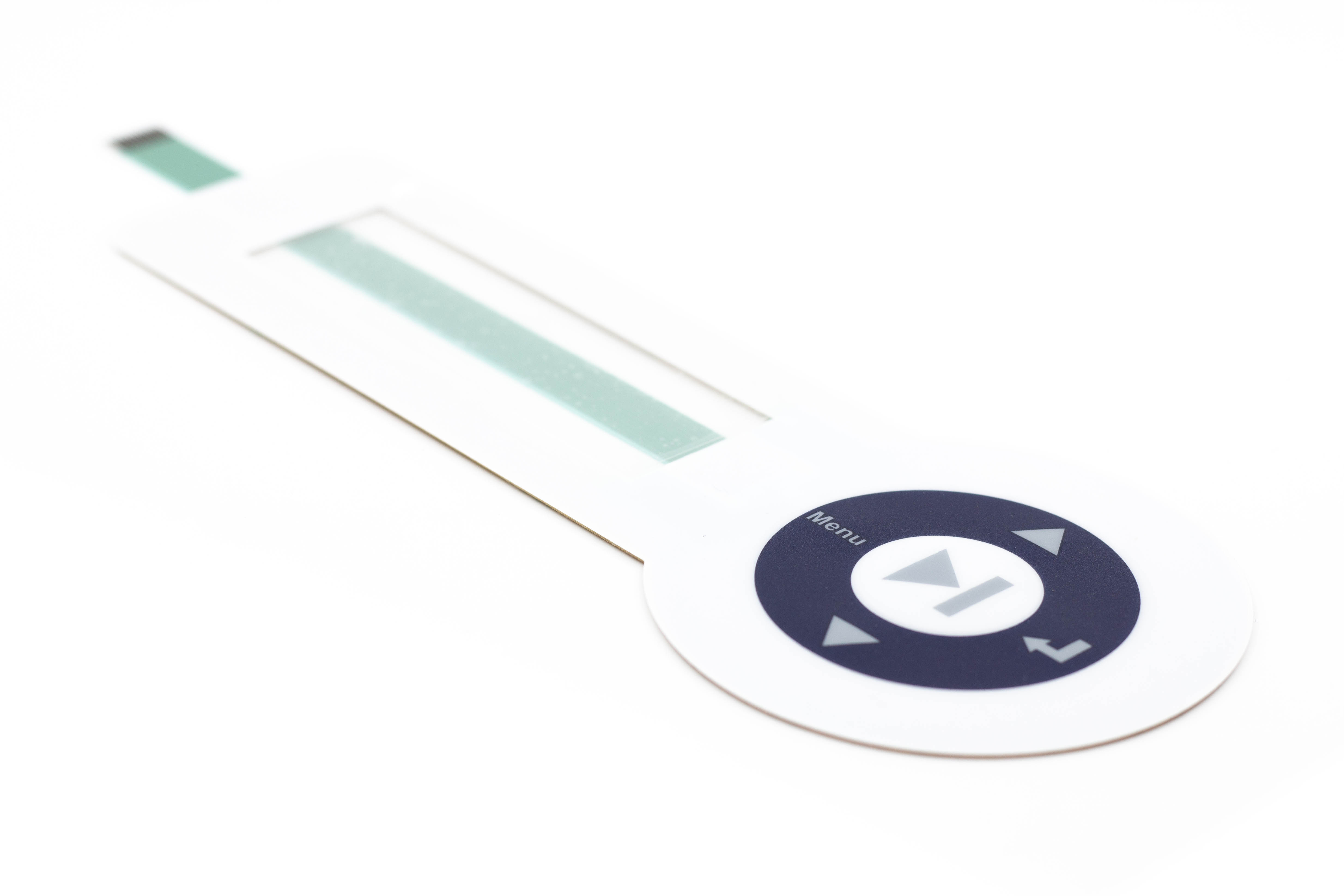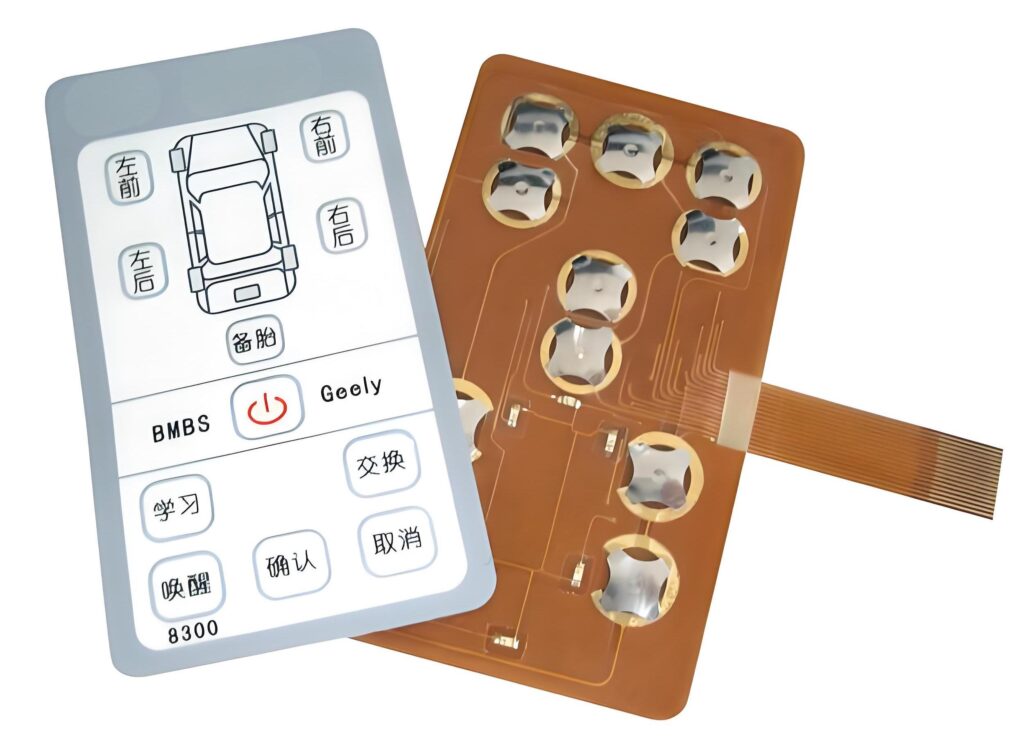Recognizing the Value of Membrane Layer Change in Modern Electronics
Membrane layer buttons are essential components in modern-day electronic tools. They offer a mix of performance and style that improves user communication. Their lightweight and sturdy nature makes them suitable for various applications. As sectors evolve, the demand for personalization and progressed attributes grows. Understanding how membrane layer changes add to development discloses their relevance in forming the future of electronic devices. What exists ahead for this innovation?
The Essentials of Membrane Layer Switch Modern Technology
Although often forgotten, membrane button technology plays a vital function in the modern-day electronics landscape - membrane switch. These tools, made up of multiple layers, serve as user interfaces for numerous digital items, ranging from house appliances to medical devices. A typical membrane layer switch contains a graphic overlay, a spacer layer, and a circuit layer, which are carefully constructed to develop a functional interface.When stress is applied to the overlay, the circuit layer is completed, allowing signals to be transmitted to the gadget. This modern technology is known for its versatility, making it possible for customization in form, performance, and style to meet details user needs. Additionally, membrane switches are lightweight and thin, making them suitable for applications where space is a costs. Their toughness and resistance to ecological elements further improve their allure, guaranteeing they can endure extreme problems while keeping capability. Generally, membrane button modern technology is integral to producing straightforward and reliable electronic devices

Secret Benefits of Membrane Layer Changes
Membrane switches over deal numerous crucial advantages that make them a preferred option in different electronic applications. Their layout permits a compact kind aspect, allowing producers to create streamlined and lightweight tools. Furthermore, membrane layer switches are resistant to dirt, moisture, and chemicals, which boosts their durability and long life sought after settings. The responsive responses given by these switches can enhance individual experience, making them user-friendly and very easy to operate.Furthermore, membrane buttons can be personalized with varied graphics and colors, enabling distinct branding opportunities. The manufacturing procedure is normally cost-effective, particularly for high-volume manufacturing, as it minimizes assembly time and simplifies style. Membrane changes require minimal upkeep, contributing to reduced overall operational expenses. These advantages emphasize their expanding appeal in modern electronics, where reliability and user-friendly interfaces are important.

Applications Across Numerous Industries
The flexibility of membrane layer switches over enables their extensive adoption throughout different sectors. In the clinical area, they are generally used in diagnostic devices and client surveillance systems, providing a resilient interface resistant to impurities. The automotive sector uses membrane layer buttons for control panel controls, boosting user experience with sleek styles that stand up to rough conditions. In consumer electronic devices, they function as control panels for tools such as microwaves and coffee machine, providing an user-friendly interface that is easy to tidy. The aerospace industry uses membrane layer switches in cabin controls, where reliability and area effectiveness are paramount. In addition, the industrial market leverages these switches in equipment and control systems to assure durable operation sought after environments. This wide range of applications emphasizes the versatility of membrane layer buttons, making them essential components in improving capability and customer interaction throughout diverse technological landscapes.
Modification and Style Flexibility

Future Fads in Membrane Layer Switch Over Development
Emerging patterns in membrane switch development indicate an expanding emphasis on enhanced capability and integration with clever innovations. As customer demand for much more advanced electronic devices increases, makers are focusing on creating membrane switches that not only serve standard functional functions however likewise integrate features like touch sensitivity, backlighting, and haptic feedback.Furthermore, advancements in materials are anticipated to enhance longevity and ecological why not check here resistance, making membrane switches over appropriate for diverse applications in sectors such as medical care, automobile, and consumer electronic devices. The assimilation of capacitive touch innovation is most likely to come to be extra widespread, enabling sleeker designs and boosted user interfaces. membrane switch.Additionally, the increase of the Internet of Points (IoT) is prompting the advancement of membrane switches that can connect wirelessly with other devices, boosting interconnectivity. Generally, the future of membrane switch modern technology shows up promising, driven by technology and the quest of straightforward options
Frequently Asked Inquiries
Exactly How Do Membrane Switches Contrast to Traditional Mechanical Buttons?
Membrane layer buttons, being extra space-efficient and using a sleek style, contrast with conventional mechanical buttons that give tactile responses. The former frequently feature adjustable graphics, while the last usually assure resilience and integrity in different applications.
What Products Are Generally Made Use Of in Membrane Switch Over Manufacturing?
Membrane buttons are normally produced utilizing materials such as polyester, polycarbonate, and membrane switch published conductive inks. These products provide responsiveness, adaptability, and resilience, making them ideal for different applications in digital devices and interface.
Can Membrane Layer Switches Be Repaired or Reused?
Membrane buttons can often be repaired, particularly if minor concerns develop, such as adhesive failing or surface damage. Total reuse is commonly limited due to wear and potential deterioration of materials over time.
Just How Do Ecological Factors Impact Membrane Layer Switch Performance?
Ecological factors, such as humidity, temperature level, and direct exposure to chemicals, significantly influence membrane layer button performance. Severe conditions can result in degradation, affecting responsiveness and durability, ultimately compromising the capability of the device in numerous applications.
What Is the Typical Lifespan of a Membrane Layer Switch?
The regular life-span of a membrane button normally varies from 1 to 5 million actuations, depending on elements such as use frequency, ecological problems, and the materials used in production, affecting toughness and efficiency longevity. A typical membrane layer button is composed of a visuals overlay, a spacer layer, and a circuit layer, which are diligently set up to develop a practical interface - membrane switch.When stress is applied to the overlay, the circuit layer is finished, enabling signals to be sent to the device. The tactile feedback provided by these switches can enhance customer experience, making them easy and user-friendly to operate.Furthermore, membrane buttons can be tailored with varied graphics and shades, allowing for special branding opportunities. As customer demand for a lot more innovative electronic tools increases, suppliers are focusing on developing membrane switches over that not just offer fundamental operational functions however likewise incorporate functions like touch sensitivity, backlighting, and haptic feedback.Furthermore, innovations in products are expected to improve sturdiness and ecological resistance, making membrane switches ideal for varied applications in industries such as health care, automotive, and customer electronics. you could check here The integration of capacitive touch technology is most likely to become extra prevalent, enabling for sleeker designs and enhanced customer interfaces.Additionally, the rise of the Web of Points (IoT) is triggering the advancement of membrane switches over that can interact wirelessly with various other gadgets, improving interconnectivity. Membrane layer switches, being extra space-efficient and offering a smooth style, comparison with standard mechanical buttons that offer responsive responses